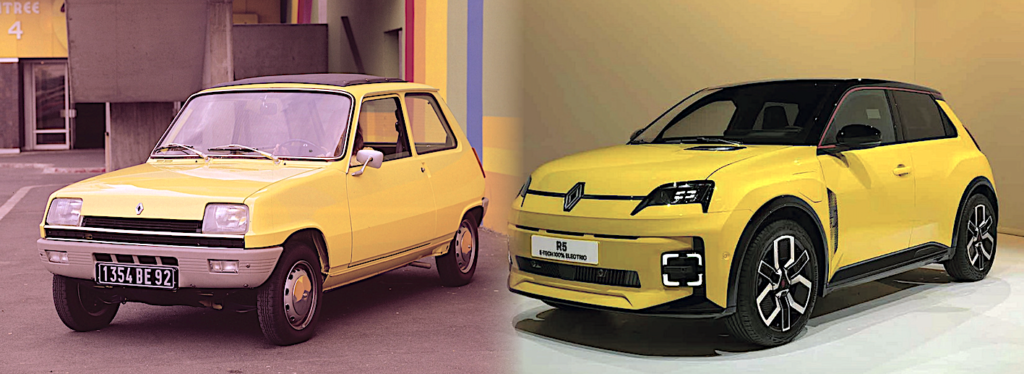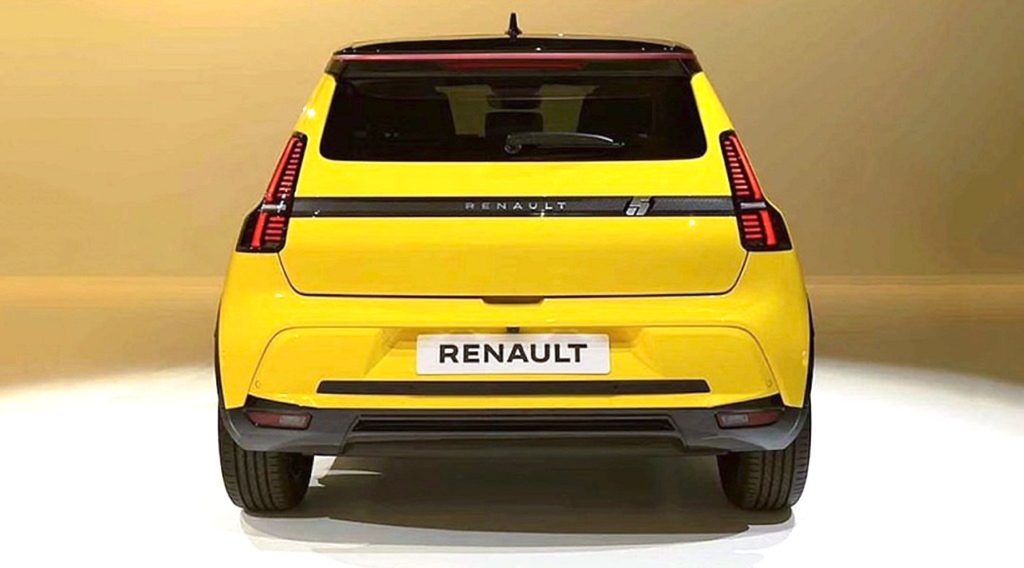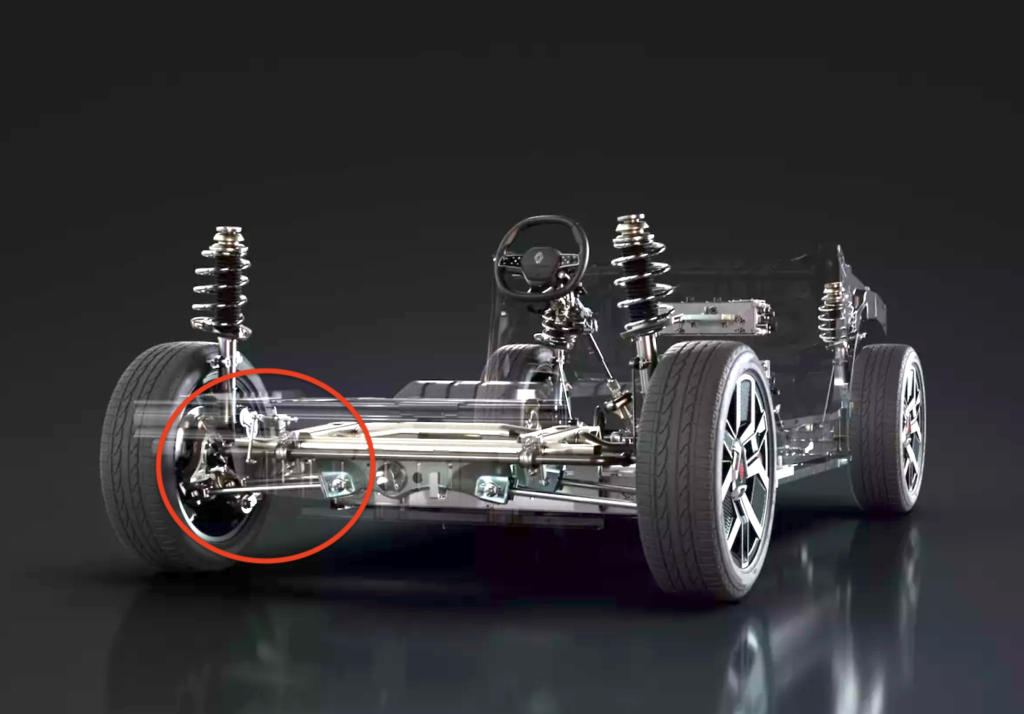

Here she is, here she is. At last! And yet, just three years to go from the R5 prototype of the 2021 ‘Renaulution’ presentation to a production-ready car is no mean feat! Well done to the design, engineering and production teams… Particularly as they had to deal with the new AmpR Small platform (even though it is derived from an existing internal combustion unit), and added to that a number of integration problems, particularly with the design on the said platform, with extremely short overhangs to respect the style of the concept car.

Laurens van den Acker – the Renault Group’s head of design – explained it well in the interview he gave us: “It wasn’t that easy to take the R5 to series production. Gilles Le Borgne (Renault Group Director of Technology) moved the lines and created the engineering we needed to help us, and he made the difference.” Read more here: https://lignesauto.fr/?p=31338


We won’t go into the technical details, or the powertrain (110 kW motor without rare earth, 40 kWh battery and 300 km range or 52 kWh battery and 400 km range). In terms of design, let’s not forget that the R5 E-TECH of 2024 draws its DNA from its sisters of 1972, 1980 with the Turbo and 1984 – just 40 years ago – with the Supercinq.


At the end of the 1960s, when it came to designing a look for project 122 of the future Renault 5 of 1972, the stylists didn’t necessarily imagine giving it a mischievous and human look. It was above all the need to limit the number of parts on the front end that led them to sketch this headlamp. It joins the wings, bonnet, radiator grille and bumper, without any artifice, all to ‘close’ a bow that will become, with advertising, a smiling, young and mischievous face!

More than fifty years later, it is this look that has been key to the design of the Renault 5 unveiled today. Talking about the look of the 2021 R5 prototype, Nicolas Jardin (below), the concept’s exterior designer under François Leboine, then head of the ‘phase advance’ department (now head of Fiat design), explains that “the Renault 5 had this very special look. We put a lot of energy into trying to focus on this theme and ensure that it became a dominant, and even a living, element in our concept. The promotional cartoon for the Renault 5 in the 1970s really gave us the desire to recreate this living aspect. We analysed the geometry of the headlight, its proportions, contours and even the radius values to redesign it.

And this vision will literally save this concept! In fact, it needs to be put into context, as it has undergone two changes in management and design during its genesis, with the arrival of Luca de Meo as head of the Renault group in July 2020, and with that of Gilles Vidal (below) as head of Renault design in November 2020.

He recalls that “when I arrived on 2 November, I obviously discovered the many models of the plan in progress. Of course, there was the Renault 5 Prototype project. It was Luca de Meo who, at a major presentation in July 2020, fell under its spell. Luca, who has an acute sense of the product, took hold of this proposal to bring it out of the shadows and put it on the product plan. Now that I know him better, I can imagine that he instantly thought of what the object would be and the marketing strategy to go with it! He really got the brand excited about this project! A project with many nods to the 1972 icon, and not just in his eyes.

Gilles Vidal highlights the red piping that runs along the windscreen and roofline, a tribute to a famous Renault 5, the Turbo (above), which also inspired the rear wings. Styling elements inspired by the original R5 have been modernised to conceal modern functions: the bonnet air intake now conceals the battery charge level indicator. The rear door handles are camouflaged, a reminder that the Renault 5 was a two-door model from 1972 to 1980.


For Gilles Vidal, in 2021, the hardest part was still to come: turning the idea into reality, and not disappointing. “When I arrived at Renault’s design department in 2020, I discussed the details of the concept, the design language and adjusted the balance between its retro and futuristic elements. The Renault 5 had to be modern, not vintage. There’s a thousand things we were able to work on!



“But the concept didn’t reveal much about the interior. There was still a lot to be done on board, and we wanted to push the design language even further to create an interior that matched the exterior perfectly. As for the R5’s unique design language, Gilles Vidal explains that “between this retro-futuristic object, which has the right to live its life with this design language, and the future cars in the range, which will be sold more or less at the same time, there will be a difference in design and identity, which will necessarily be assumed.


Luca de Meo made no secret of the fact that he would be going even faster to get the Twingo revival on the road, while the first driving prototypes of the 4-Ever are already being tested. And for those who might not appreciate this strategy of drawing on the past to offer (so to speak…) modern 100% electric vehicles, Laurens van den Acker explained that “we don’t want yesterday’s icons to become the only possible way forward. Look at the range, it’s not just these models. We’re also producing the Rafale, the Scénic and we’re also going to make a Clio, which is going to be very modern! There is no single solution, no single answer. Both strategies are possible. Look at the Hyundai brand: the Ionic 5 and 6 are completely different, and I don’t think the market is complaining about that. Fair enough…

In addition, Renault has not skimped on technology with a multi-link rear axle (below). The next Alpine A290 above, which will be based on this system, is already looking forward to this!

Note the official dimensions of this sporty sister of the R5 E-TECH: length 3.99 m, width 1.82 m, height 1.52 m, wheelbase 2.53 m and that the steering wheel of this Alpine will be very different from that of the R5 E-TECH (below).

R5 E-TECH: WHAT IT LACKS
At less than 4 metres (3.92 m), the R5 E-TECH can naturally be considered a city car. That said, we would have liked to see the famous side guards that were introduced in 1976 on the R5 GTL version. Admittedly, when we see the rejection of the ‘Airbump’ on the first generation Citroën Cactus, we can understand…

In the mid-1970s, the VBG (Véhicule Bas de Gamme) programme was the first to introduce this type of protection on many models of ‘small’ Renault city cars. Above, in yellow, Gaston Juchet’s model.
